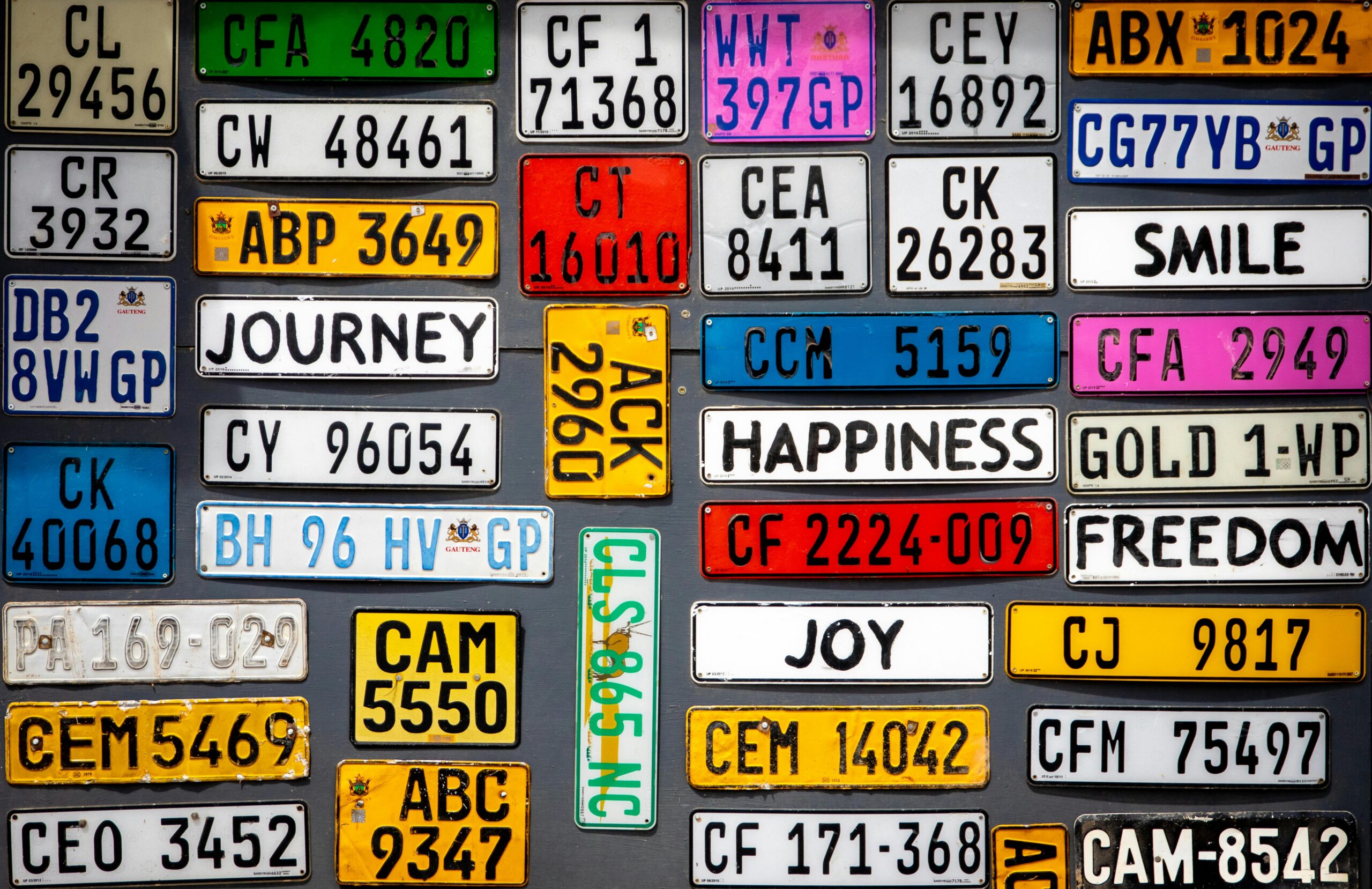Vermont License Plate Secrets: What Makes Them Unique and Valuable? If you’ve ever wondered why Vermont license plates seem to stand out from the crowd, you’re not alone. This article dives deep into the fascinating world of Vermont license plate history, uncovering the hidden gems and rare features that make these plates highly sought-after by collectors and enthusiasts alike. From their distinct designs to the intriguing rarity factors, Vermont plates hold a special place in the realm of vintage license plates and vehicle memorabilia. But what exactly sets them apart? And why do some of these plates fetch surprisingly high prices in the market?
You might be surprised to learn that Vermont license plates are more than just a way to identify vehicles—they’re a symbol of state pride and craftsmanship. With their iconic green and white color scheme, and unique serial numbering system, these plates carry stories that span decades. Plus, certain limited-edition or discontinued designs have become valuable collector’s items that can dramatically increase in worth over time. Are you curious about how to spot these rare gems or understand the factors that contribute to their value? Keep reading to explore the secrets behind Vermont license plates, including tips on spotting authentic plates and understanding the market trends driving their popularity today.
Whether you’re a car enthusiast, a collector hunting for that perfect find, or simply curious about what makes Vermont’s license plates so special, this guide offers a captivating look into their unique appeal. Discover why these plates aren’t just standard issue but rather a piece of Vermont’s automotive heritage that holds impressive value both historically and financially. Ready to unlock the mystery behind the Vermont license plate craze? Let’s get started!
Unveiling Vermont License Plate History: 7 Fascinating Facts Every Collector Should Know
Unveiling Vermont License Plate History: 7 Fascinating Facts Every Collector Should Know
Vermont, one of the charming states in New England, has a long and interesting history when it comes to its license plates. For collectors and enthusiasts, Vermont license plate hold stories and secrets that makes them stand out from others in the United US. If you ever wondered what makes these plates unique, or why some are more valuable than others, you are in the right place. This article dives deep into the history, quirks, and characteristics of Vermont license plates, revealing seven fascinating facts that every collector should know.
1. Vermont Was Among The First States To Issue Plates
Believe it or not, Vermont started issuing license plates early compared to many other states. The first official plates were issued in 1905, making Vermont one of the pioneers in vehicle registration. Before that, owners had to create their own plates or display their registration numbers on the vehicle in some other way. This early start means that some very old and rare plates are out there, and they are highly sought after by collectors.
2. The Famous “Green Mountain State” Slogan
One of the most iconic features of Vermont license plates is the inclusion of the phrase “Green Mountain State.” This slogan has been used on plates for decades, reflecting Vermont’s nickname and its scenic mountain landscapes. Many plates from the mid-20th century prominently display this phrase in various fonts and styles, which helps collectors date them more easily. The slogan also adds to the nostalgic appeal of Vermont plates, making them a favorite for those who loves state pride.
3. Unique Numbering Systems Through The Years
Unlike some states that had simple numbering, Vermont’s license plates have used several different numbering systems. Early plates used a combination of letters and numbers that changed frequently. For example:
- 1905–1915: Numeric-only plates ranging from 1 to 9999.
- 1916–1930s: Introduction of county codes and letter prefixes.
- 1940s–1960s: Sequential numbering without county identifiers.
- Post-1970s: Alphanumeric combinations.
These changes not only reflect administrative updates but also give each plate a story about its era. For collectors, understanding these numbering systems is crucial to appreciating the rarity and historical context of a plate.
4. Material And Design Variations Over Decades
Vermont license plates were made from different materials and featured diverse designs which could affect their collectibility. Early plates were made from porcelain or steel, but during World War II, when metal was scarce, Vermont issued plates made from fiberboard. This was unusual and now fiberboard plates are very rare and valuable. The designs also evolved:
- 1905 to 1930s: Simple black numbers on white or cream background.
- 1940s: Introduction of green and white color schemes.
- 1950s and onward: More elaborate designs featuring mountains, state outline, or slogans.
Collectors often look for these material and design differences to identify and verify genuine plates.
5. Specialty Plates Reflecting Vermont’s Culture
Vermont has issued many specialty plates that reflect its culture, environment, and interests of its residents. Some examples include:
- Ski-themed plates celebrating Vermont’s winter sports heritage.
- Maple leaf plates honoring the state’s famous maple syrup production.
- Wildlife plates featuring native animals like moose or bears.
- Historic preservation plates supporting Vermont’s landmarks.
These specialty plates usually have limited production runs, which can make them more valuable and collectible. If you ever spot one of these, it’s worth digging into its background.
6. The Rarity Of Low-Number Plates
In Vermont, as in many states, low-number license plates are very prized by collectors. Plates with numbers like “1,” “2,” or “10” are extremely rare and often held by prominent individuals, state officials, or even auctioned for high prices. Because Vermont originally issued plates sequentially, the lowest numbers date back to the earliest years of vehicle registration. This scarcity combined with their historical significance makes low-number plates some of the most valuable in collections.
7. Vermont License Plate Collectors Community
If you are interested in Vermont license plates, you are not alone. There is a vibrant community of collectors and historians who share information, trade plates, and organize events. Groups often focus on:
- Authenticating plates and sharing knowledge about fakes or replicas.
- Documenting the history and changes in Vermont’s plate designs.
- Hosting swap meets or shows dedicated to license plates.
- Publishing newsletters or guides about collectible plates.
Joining these communities can be a great way to learn more, find rare plates, and connect with others who share your passion.
To give you a clearer idea about different Vermont plate styles over time, here is a simplified comparison table:
Year Range | Material | Design Features | Notes
How Vermont License Plates Stand Out: Unique Design Elements and Hidden Features Explained
Vermont’s license plates are not just simple vehicle identifiers; they are a piece of the state’s history and culture that make them stand out from many others in the United States. If you ever seen a Vermont license plate, you might have notice it has unique design elements and hidden features that makes it both valuable and interesting for collectors and locals alike. This article dives into what makes Vermont license plates so special, exploring their design, secret traits, and why they hold a certain charm you don’t find elsewhere.
Distinctive Design Elements of Vermont License Plates
Vermont has a long-standing tradition of incorporating natural and state pride themes into its license plate designs. Unlike many states that just go with a basic look, Vermont plates feature several design components that grab attention:
- Green Mountains Symbolism: Most Vermont plates have a representation of the Green Mountains, which is a key symbol of the state’s geography and identity. This mountain range is iconic, and its silhouette or image appears in many plate designs over the years.
- Color Scheme: The use of green and white colors on the plates reflects Vermont’s nickname, “The Green Mountain State.” This consistent color palette helps plates be instantly recognizable from a distance.
- State Motto: Some Vermont plates include the state motto “Freedom and Unity,” which is an unusual feature that you don’t see on many other states’ plates.
- Year of Issue: Older plates tend to have the year of issue stamped or printed on them, which helps collectors date them easily.
Besides these, Vermont license plates often include small but meaningful icons or graphics, such as a maple leaf or a silhouette of a cow, reflecting Vermont’s farming traditions and autumn foliage fame.
Hidden Features That Make Vermont Plates Valuable and Unique
Vermont license plates also hides some interesting features that make them more than just a reflective surface with numbers. Some of these elements are practical, while others are more about security or uniqueness:
- Reflective Material: Modern Vermont plates use a reflective sheeting that helps improve visibility at night. This material is not unique to Vermont but their particular pattern of reflectivity, combined with color scheme, differs from other states.
- Microprinting: On some plates, very small text or lines are printed as a security feature to prevent counterfeiting. These microprints are hard to see without magnification but adds to the plate’s authenticity.
- Serial Number Formats: Vermont uses specific alphanumeric patterns that changes over the years. For example, older plates might have only numbers, while newer ones include combinations of letters and numbers, allowing for more unique plate sequences.
- Material Composition: Most Vermont plates are made from aluminum, but vintage ones can be steel or even porcelain enamel. These older plates are considered collectible because they are rare and durable.
- Specialty Plates: Vermont offers a wide range of specialty plates, including those for veterans, environmental causes, and colleges. These plates often have additional embossing or logos which makes them stand out even more.
A Brief History of Vermont License Plates
The story of Vermont license plates starts in 1905, when the state first required vehicle registration. The early plates were very simple, often just a number painted on a leather or metal plate. Over time, the design evolved significantly:
- 1910s and 1920s: The plates were made of steel and started to include the word “Vermont” and the year.
- 1930s: Introduction of enamel-coated steel plates, which made plates more weather-resistant.
- 1950s: The famous “Green Mountains” design started to appear, establishing the visual identity still used today.
- 1970s-present: Use of reflective materials, more sophisticated graphic design, and specialty plates became standard.
This history shows how Vermont’s plates not only served a practical purpose but also reflected the state’s pride and technological advancement.
What Makes Vermont License Plates Collectible?
Collectors often look for license plates with specific traits. Vermont plates have several factors that increase their collectability and value:
- Age and Condition: Older plates in good condition are rare and often fetch more money.
- Design Variations: Plates with unique or limited-edition designs, such as the first “Green Mountains” plates or specialty plates, are highly sought after.
- Errors or Misprints: Like many collectible items, mistakes on plates (wrong colors, misaligned numbers) become rare curiosities.
- Low Serial Numbers: Plates with low or unique serial numbers can be more valuable.
- Material Type: Porcelain enamel plates or early steel plates are rarer and more durable, attracting collectors.
Comparing Vermont License Plates to Other New England States
It’s interesting to see how Vermont’s plates compare to neighboring states in New England:
| State | Common Color Scheme | Design Theme | Specialty Plates Variety | Reflective Material
Top 5 Rare Vermont License Plates That Boost Collector Value Dramatically
Vermont, known for its beautiful landscapes and quaint small towns, has a surprisingly fascinating world when it comes to license plates. For collectors and enthusiasts, Vermont license plates offer more than just vehicle identification; they carry stories, history, and sometimes, a significant boost in value. If you ever wondered what makes certain Vermont license plates rare or valuable, you’re in luck. This article dives into the top 5 rare Vermont license plates that dramatically increase collector value and explores why Vermont plates are so unique compared to others.
What Makes Vermont License Plates Special?
Before we jump into the rare plates, it’s important to understand why Vermont license plates stand out. Unlike many states that change their plate designs frequently, Vermont has a tradition of keeping certain designs for long periods. This gives plates a distinct character and makes older versions more sought after. Vermont plates often feature simple, yet charming designs that highlight the state’s identity, like the iconic “Green Mountain State” tagline.
Another factor is Vermont’s relatively small population, which means fewer plates are produced overall. When combined with limited runs of special or commemorative plates, this scarcity drives up collector interest. Plus, Vermont was among the first states to adopt reflective plates back in the 1950s, which makes early versions even more collectible.
Top 5 Rare Vermont License Plates That Boost Collector Value Dramatically
1959 Green on White “Vermont” Plate
- This plate is one of the earliest examples of Vermont’s modern design.
- It features green lettering on a white background, simple and clean.
- Only a small number survived in good condition, which makes it highly valuable.
- Collectors prize this plate for its historical significance and rarity.
1987-1988 Bicentennial Plate
- Issued to commemorate Vermont’s role in the American Revolution.
- It has a unique design featuring a colonial minuteman and the state outline.
- Only available for two years, making it a short production run.
- Condition and originality greatly impact its collector price.
1937 Porcelain Plate
- One of the oldest Vermont plates still in existence.
- Made from porcelain, which was phased out in favor of metal plates soon after.
- These plates are fragile and rare because many broke or were discarded.
- A porcelain plate in decent condition can fetch high prices at auctions.
1983 “Green Mountain State” Specialty Plate
- This plate introduced the now-famous “Green Mountain State” slogan.
- It was Vermont’s first specialty plate, with limited availability.
- Its unique design and status as the first specialty plate make it popular.
- It’s a favorite among local collectors and those who love Vermont history.
Vintage Farm Plates (Pre-1950s)
- These plates were issued to farm vehicles and have a distinct format.
- Usually smaller and with different numbering than passenger plates.
- Their rarity comes from the small production numbers and usage restrictions.
- Many collectors seek these for their uniqueness and connection to Vermont’s agricultural heritage.
Vermont License Plate Secrets: Why Are They So Valuable?
- Low Production Numbers: Vermont’s small population means fewer plates ever existed. Rarer plates are naturally more desirable.
- Historical Significance: Plates tied to important state events or innovations (like reflective materials) gain extra value.
- Unique Material and Designs: Porcelain plates or those with special slogans highlight Vermont’s distinct approach.
- Limited Edition Runs: Plates made for short periods or special occasions are harder to find.
- Condition Matters: Well-preserved plates with original paint, no rust, or dents can fetch premiums.
Comparing Vermont Plates to Other New England States
| State | Common Plate Material | Specialty Plate Popularity | Notable Rare Plate Examples |
|---|---|---|---|
| Vermont | Metal, Porcelain (early) | High (specialty and historic) | 1937 Porcelain, 1987 Bicentennial |
| New Hampshire | Metal | Moderate | 1955 Blue on White, Vintage Farm Plates |
| Massachusetts | Metal | High | 1960s Red Sox Plates, Early Blue Plates |
| Maine | Metal | Moderate | 1940s Porcelain, Tourist Plates |
| Rhode Island | Metal | Low | Pre-1950s Small Series Plates |
Vermont’s porcelain plates are particularly rare compared to other states, where porcelain was less used or replaced earlier. That makes Vermont’s porcelain examples a true collector’s gem.
Practical Tips for Collectors Interested in Vermont License Plates
- Look for plates with original paint and no repainting; restored plates tend to have less value.
- Verify plate authenticity through state records or collector groups to avoid fakes.
- Join local Vermont license plate
Why Are Vermont License Plates So Valuable? Insider Tips from Experienced Plate Enthusiasts
Vermont license plates have gained quite a reputation among collectors and vehicle enthusiasts across the United States. But why are Vermont license plates so valuable compared to other states? You might think all plates just serve the same purpose — identification. Yet, Vermont’s plates carry a unique history, distinctive designs, and rare variations that make them highly sought after. Let’s dive into the insider tips from experienced plate enthusiasts and uncover what truly makes Vermont license plates special.
The History Behind Vermont License Plates
Vermont started issuing license plates in 1905, making it one of the earlier adopters in the U.S. This long history means collectors have a wide range of plates to look for, from the earliest porcelain-coated steel plates to the modern reflective versions. The plates have gone through various design phases, each reflecting Vermont’s culture and values at the time.
- Early plates (1905–1917): Mostly simple, utilitarian numbers on a metal background.
- Porcelain enamel plates (1918–1930s): Known for their durability and colorful appearance.
- Reflective plates (1950s onward): Improved visibility and modern design elements.
The rarity of older plates plays a big role in their value. Because fewer survived the wear and tear of decades, especially those from the porcelain era, collectors pay a premium for well-preserved examples.
What Makes Vermont Plates Unique?
There are several things that make Vermont license plates stand out compared to other states:
Distinctive Slogan and Design: Vermont plates famously carried the slogan “Green Mountain State,” which not only promotes Vermont’s natural beauty but also makes the plates instantly recognizable. The green and white color scheme used for many years reinforces the state’s branding.
Limited Plate Production: Vermont has a relatively small population, so the number of plates issued each year is much lower than in populous states like California or Texas. This scarcity can increase the demand among collectors.
Specialty Plates: Vermont offers unique specialty plates — from ski areas to maple syrup promotions — that are not widely available elsewhere. These specialty plates sometimes have lower production numbers, making them more collectible.
Low Turnover Among Owners: Many Vermont residents tend to keep their plates or vehicle history for a long time, which results in fewer used plates entering the resale market. This scarcity helps push up the value for rare or vintage plates.
Insider Tips from Experienced Plate Collectors
Plate enthusiasts often share tips on how to spot valuable Vermont license plates or invest wisely in them. Here are some of the common advice points:
Look for Early Porcelain Plates: Plates from the 1910s and 1920s with porcelain enamel finish are very rare and highly prized. Condition matters a lot here — chips or rust can drastically reduce value.
Check for Unique Numbers or Lettering: Plates with low serial numbers (like 1, 2, or 10) or personalized lettering can fetch a higher price.
Keep an Eye on Specialty and Commemorative Issues: Plates issued for special causes, anniversaries, or limited runs might become valuable over time, especially if they were produced in small quantities.
Understand Plate Condition Grading: Collectors grade plates from “Poor” to “Mint.” Rust, fading, dents, or missing paint can lower value by a lot. Plates in excellent condition can sell for hundreds or even thousands of dollars.
Research Plate Variants: Slight differences in font, color, or material can distinguish common plates from rare variants that are worth more.
Comparing Vermont License Plates to Other New England States
To truly understand what sets Vermont plates apart, it helps to compare them with neighboring states:
| State | Population (Approx.) | Plate Production Volume | Notable Features |
|---|---|---|---|
| Vermont | 650,000 | Low | Early porcelain plates, “Green Mountain State” slogan, specialty plates |
| New Hampshire | 1.4 million | Medium | Granite State slogan, less porcelain use |
| Maine | 1.3 million | Medium | Pine Tree State plates, some porcelain plates but fewer than Vermont |
| Massachusetts | 7 million | High | Variety of specialty plates, but common designs dominate |
Vermont’s smaller population and earlier adoption of porcelain make its plates stand out more in value compared to the larger, more populous states where plate production is higher and older plates are less scarce.
How to Buy and Sell Vermont License Plates
If you wanna get involved in collecting Vermont license plates or selling them, here are some practical suggestions:
Buy From Reputable Dealers or Shows: Plate collectors often meet at swap meets, car shows, or online auctions. Authenticity and condition should be verified before purchase.
Check State Regulations: Vermont allows the transfer of some specialty plates, but rules vary.
Step-by-Step Guide to Authenticating and Preserving Your Vermont License Plate Collection
Step-by-Step Guide to Authenticating and Preserving Your Vermont License Plate Collection
Collecting Vermont license plates can be a fascinating hobby, but many collectors don’t know how to properly authenticate or preserve their treasures. Vermont license plate secrets are hidden in their unique designs, materials, and historical contexts, making them valuable to enthusiasts and historians alike. This article will walk you through the steps to verify your plates and keep them in great condition, while also exploring what makes Vermont plates special.
What Makes Vermont License Plates Unique and Valuable?
Before jumping into the authentication process, it’s important to understand why Vermont license plates stand out among other states. Vermont, known for its picturesque landscapes and maple syrup, also has a distinct vehicle registration history.
- Distinctive Slogans and Designs: Vermont plates often feature slogans like “Green Mountain State” or “The Ski State,” reflecting the state’s culture.
- Material Evolution: Older plates were made from steel, while modern ones use aluminum, which affects their weight and durability.
- Limited Production Runs: Some years had low plate production numbers, making those plates rare.
- Specialty and Commemorative Plates: Plates issued for organizations, events, or causes often have unique designs and limited availability.
- Serial Number Patterns: Early plates used simple serial numbers, later evolving to include letters and numbers, sometimes indicating the county or vehicle type.
Collectors should note that plates issued before the 1950s tend to be more valuable due to their scarcity and historical significance. Moreover, plates with errors—such as misprints or color variations—are particularly sought after.
Step 1: Research Your Vermont License Plate
Start by gathering as much information as you can about your plate. Look for the year of issue, serial number format, and any distinctive features, such as embossed letters or slogans.
- Check Vermont Department of Motor Vehicles (DMV) archives or websites for historical plate catalogs.
- Use collector forums or Facebook groups dedicated to license plate collecting.
- Consult books or guides on Vermont license plates, which often provide detailed descriptions and images.
Knowing the plate’s background helps you identify if it’s authentic or a reproduction.
Step 2: Examine Physical Characteristics
Authenticating a Vermont license plate isn’t just about matching dates. You need to look closely at the plate itself for signs of authenticity.
- Material: Original plates before 1960 are usually steel, heavier than aluminum plates issued later.
- Embossing: Genuine plates have raised letters and numbers; fake ones may be flat or poorly done.
- Paint and Reflective Elements: Older plates used enamel paint, which ages and chips differently than modern reflective coatings.
- Mounting Holes: Check if the holes are consistent with the era’s manufacturing standards; some fakes have irregular holes.
- Wear and Patina: Plates that look too new or have inconsistent weathering might be replicas.
Step 3: Verify Serial Numbers and County Codes
Vermont license plate numbers often include county codes or follow specific numbering rules. Cross-reference the serial number on your plate with known patterns for the year.
Example of county code usage in Vermont plates:
| County | Code |
|---|---|
| Addison | A |
| Bennington | B |
| Chittenden | C |
| Essex | E |
| Franklin | F |
If your plate includes such a code, verify if it matches the issuing year and county. Mismatches may indicate a fake or altered plate.
Step 4: Consult Experts and Collectors
Sometimes, it’s hard to determine authenticity on your own. Seeking advice from experienced collectors or experts can save you from costly mistakes.
- Attend local collector shows or swap meets in Vermont or New England.
- Reach out to Vermont license plate clubs or historical societies.
- Post high-quality photos on online forums for feedback.
- Consider professional appraisals for plates you suspect to be rare or valuable.
Step 5: Preserve Your Vermont License Plate Collection
Once you authenticated your plates, preserving them is crucial to maintain their value and condition over time. Improper storage or cleaning can damage them permanently.
Tips for preservation:
- Avoid Harsh Chemicals: Use mild soap and water for cleaning; abrasive cleaners will strip paint or damage embossing.
- Store in a Dry Place: Rust is a major threat, especially for older steel plates.
- Use Acid-Free Materials: Wrap plates in acid-free paper or cloth when storing to prevent corrosion.
- Display Carefully: If hanging plates, use non-metal hooks or mounts to avoid scratching.
- Control Temperature and Humidity: Keep plates away from extreme heat or moisture fluctuations.
- Regular Inspections: Check your collection periodically for signs of deterioration.
Comparison: Vermont Plates vs. Other New England States
To understand Vermont plates better, here’s a quick comparison with neighboring states:
| Feature
Conclusion
In summary, Vermont license plates offer a unique blend of history, design, and state pride that reflects the Green Mountain State’s character. From the classic “Green Mountain State” slogan to the vibrant color schemes and special edition plates, these tags serve not only as vehicle identifiers but also as symbols of Vermont’s natural beauty and community spirit. Whether you’re a resident looking to personalize your ride or a collector fascinated by plate designs, understanding the nuances of Vermont’s license plates can deepen your appreciation for this small but distinctive state. As Vermont continues to innovate with new styles and sustainable materials, its license plates remain a testament to the state’s commitment to tradition and environmental stewardship. If you’re interested in exploring more about Vermont’s vehicle registration options or obtaining a specialty plate, be sure to visit the Vermont Department of Motor Vehicles website for the latest information and opportunities to showcase your Vermont pride.









